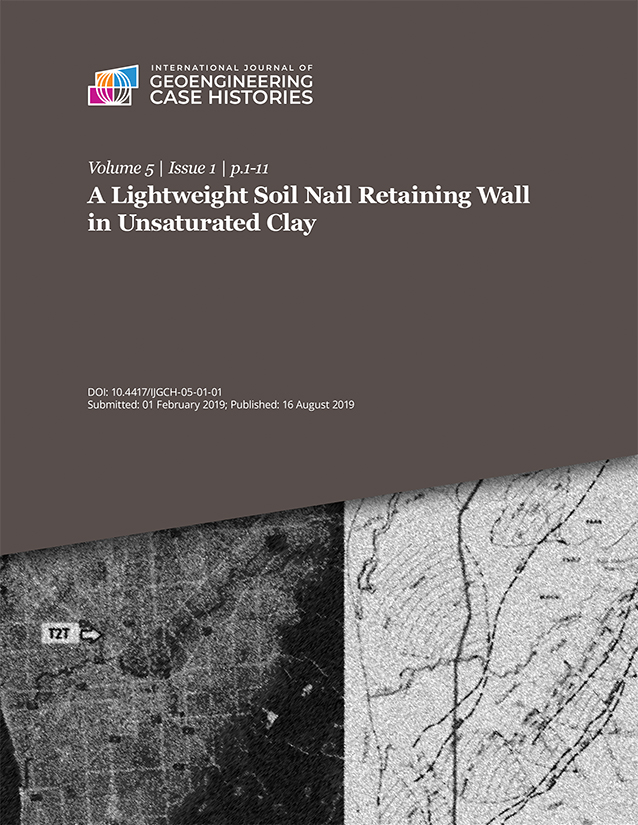A Lightweight Soil Nail Retaining Wall in Unsaturated Clay

Keywords
unsaturated, clay, retaining wall, suction, soil nail, observational method, design guidelines
Abstract
The city of Adelaide in South Australia is built on a clay plain running north-south between the Adelaide Hills and the sea. Adelaide has a Mediterranean, i.e. semi-arid, climate causing this clay to be unsaturated and stiff to very stiff when above the watertable. To improve traffic flow on the western side of Adelaide an expressway-standard road, the North-South Corridor, is being built. The 4.5km section of the North-South Corridor from the River Torrens in the south to Torrens Road in the north is referred to as the T2T project. For 2 kilometres the expressway-standard road of T2T runs in a cutting up to 9m deep. The amount of material used in conventional retaining walls, and hence their cost, could be greatly reduced if the shear strength of the unsaturated stiff clay could be estimated with sufficient accuracy for engineering design. Recent developments in unsaturated soil mechanics allow the shear strength of the clay to be determined with sufficient accuracy as long as the suction can be estimated with confidence for the various design conditions, e.g. leaking pipes. Geotechnical engineers in Adelaide have over 50 years of experience in measuring soil suction and estimating suction profiles for varying conditions of drainage. This paper shows how that experience, combined with field measurements, allowed for the design of a cost-effective lightweight soil nail/shotcrete walls for T2T by the successful consortium bidding for this job. The walls have now been under construction for a year and will be completed by late 2018. In this paper the geotechnical investigation for the T2T project and the design of the lightweight soil nail/shotcrete wall are described briefly. The geotechnical investigation showed significant sand lenses occurring in the clay in the southernmost part of the project near the River Torrens. A “toolbox” of soil nail/shotcrete wall designs was developed to cope with the variety of sand lenses. During construction the observational method was used to deal with this soil variability. This required inspection of every section of soil exposed during excavation and selection of an appropriate wall design from the design toolbox. Implementing the observational method proved difficult. This, and other problems prolonged construction, resulting in the walls costing more than originally estimated but still considerably less than conventional walls. This paper concludes with a discussion of the difficulties of implementing the observational method in this project, how these difficulties were overcome, and how they could be avoided in the future.




